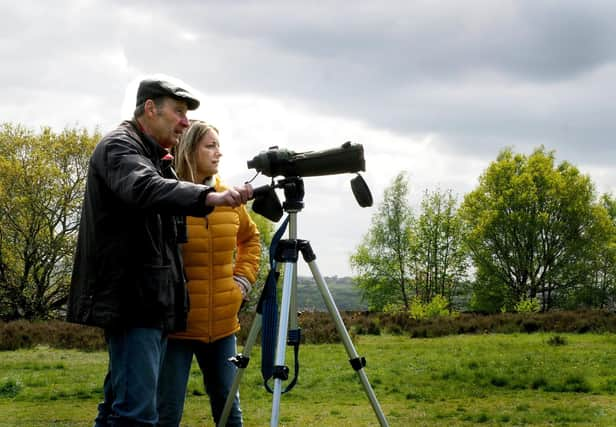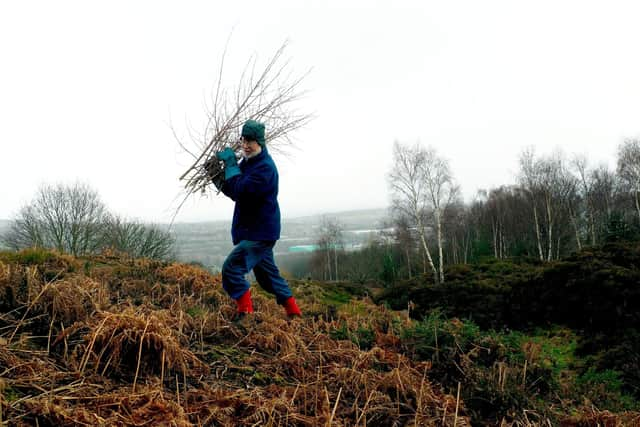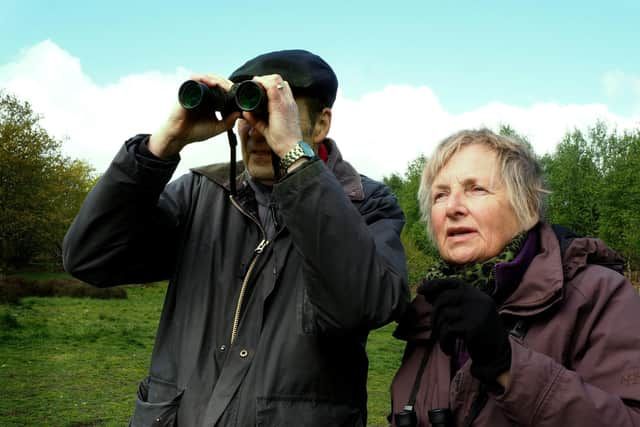Why Robin Hood's common in Sheffield is a very special bit of land


Like many of Sheffield’s local green spaces, the common land reputed to be the onetime home and workplace of Robin Hood found many new visitors in 2020, some astonished to find such a wild place only a few minutes from Hillsborough or Middlewood.
“It’s been lovely to see lots of families,” said WALC member Anne Robinson, who found herself walking on the common with husband John virtually every day during lockdown.“We’d often have people asking for directions, who’d obviously never been up there before.
Advertisement
Hide AdAdvertisement
Hide AdNow it could be that once all this is over, people who’ve found out how wonderful it all is will look to go up again.


But on the other hand, they might say that they want to get back to normal, and go to Bournemouth or Ibiza or wherever.”With a very rare and nationally important ‘lowland heath’ nature reserve on their doorstep, the Commoners hope at least some of the 2020 newcomers will continue visiting - and maybe save their Ibiza plane fare and invest in a £5 Wadsley and Loxley Commoner membership instead.The two commons (Loxley on the west and Wadsley to the east of the Loxley Edge ridge) are a mixture of woodland, lowland heath and meadow, criss-crossed by footpaths for walkers, and bridleways for ramblers, horse riders and cyclists.
The aim is to increase biodiversity by maintaining that mixture, which means some hard graft by volunteer commoners, who regularly have to clear invading birch and oak saplings to maintain the heathland.“People shouldn’t think it’s hard labour, conservation work is fun, there’s a lot of camaraderie,” said a cheery John Robinson, who notes how this has been an exciting year for wildlife, despite the increased presence of human beings.
Exactly 55 bird species noted so far, he says, including a new barn owl, the first wood warbler for 26 years, several dusk sightings of heath-loving woodcock, and also roe deer for the more vigilant naturalists.WALC colleague Alan Smith was delighted to find the common’s first bilberry pug moth, unknown in Yorkshire until 2016.“You learn an awful lot by getting involved,” Alan says, “but we won’t have all that biodiversity if we don’t get our wellies on once every month and pull a few twigs up.”Over the next few years the Sheffield and Rotherham Wildlife Trust’s ‘Sheffield Lakeland Landscape Partnership’ project is bringing significant National Lottery Heritage funding to the area, which will help the Commoners preserve the area’s wildlife and the history. (Upcoming archea ological work will look at wartime use of the common, and the possible stone circle uncovered).“This is the sort of backing that we have sought for decades,” says Hannah Isherwood, adding that the Commoners hope now to enlist new committee members with new ideas.
Advertisement
Hide AdAdvertisement
Hide Ad“The plan is to see if people come forward and base what we do in the future on how all our interests and time commitments can work best.”“Local groups such as WALC are vital for the conservation of our wildlife and green spaces, something that has proven more critical than ever over 2020,” says Danny Hodgson of Sheffield and Rotherham Wildlife Trust.“Being a local group means that everyone involved in WALC has a personal connection to the site and a personal story to tell through their experiences there.


Without the dedication of these hard working groups our countryside would be a poorer place.”Longstanding WALC member Alan Bailey says he’s always felt privileged to be able to walk to his local ‘wild’ common, especially this year.“The Common has been a lifeline to me,” he says. “Being surrounded by nature helped to keep me grounded. It was good to know there was life outside the doom and gloom of news bulletins.”Cathy Hill says campaigning for the climate and environment is ‘ important’, “But it’s good to get your hands dirty doing something practical as well. If you can be part of looking after your local open space, you feel more involved in it. You start to feels it’s yours.”